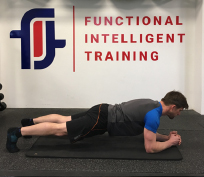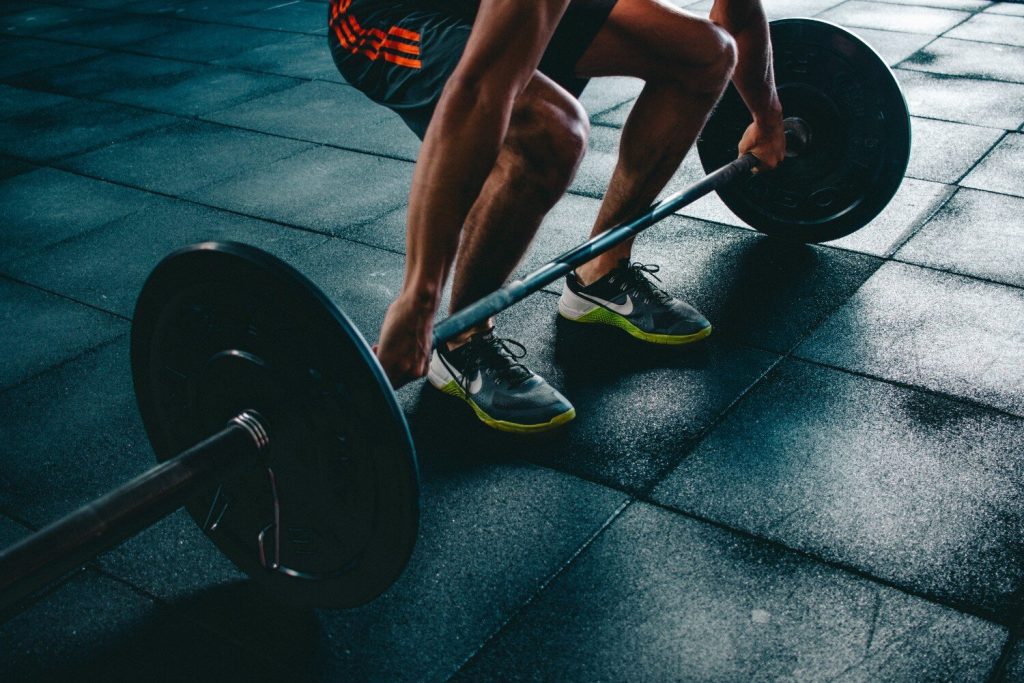To get better at running, you must run. However, using running as your only training method isn’t the most effective way to improve performance and remain injury free. With no strength training at all, you put yourself at risk of exacerbating muscular imbalances and injuries and possibly stunting your progress. Runners often neglect strength training because of a dislike for the gym or because you are unaware of the benefits of supplementing your running with strength training or you simply don’t know how to do go about starting.
This doesn’t mean you need to start lifting really heavy weights and become a gym monkey, but adding one or two sessions including the following exercises can complement your training. The aim of strength training is to enable you to tolerate training loads and therefore maximise your exposure to running training, this means being robust enough to withstand the technical and fitness training without getting injured.
These 3 key strength training exercises can be performed at home without equipment two to three times a week on non-consecutive days and on days off running.
Straight and Bent Leg Calf Raises
The calves are composed of two main muscles – the gastrocnemius and the soleus. The two heads of gastrocnemius continue upwards across the back of the knee. The soleus, like the gastrocnemius, attaches distally to the heel bone via the Achilles tendon, but does not cross the knee, instead attaching under the knee to the tibia and fibula. This anatomical difference means that the soleus contributes more to force production during running than the gastrocnemius because during running the calf has to deal with loads whilst the knee is bent. The calf muscle plays a crucial role in stride length and pace, helping initiate the push-off phase of the running stride and playing a key role in absorbing impact as your foot hits the ground. Eccentric calf strengthening will increase the resilience and shock absorbing properties of your calf, while concentric and plyometric strengthening will increase the power generation and stretch shortening cycle ability. The calf needs to be able to withstand up to eight times your bodyweight on each stride. Weak calves are often the leading cause of running injuries, Achilles tendinopathy, shin splints, calf strains and plantar fasciitis and can be the reason your pace slows on longer distances.
Straight Leg Calf Raises – Gastrocnemius
- Stand on the edge of a step, the balls of your feet firmly planted on the steps and your heels hanging over the edge
- Stand up tall with your feet hip width apart, legs straight but knees not locked
- Raise your heels a few inches off the floor coming all the way up onto tiptoes
- Hold this top position for a moment
- Try to evenly distribute your weight through all 5 toes on each foot, try not to favour your big toe or little toe
- Slowly and with control, lower you heels back towards the floor as much as your ankle mobility allows
- 3 sets of 15-20 reps – to progress, increase the number of repetitions, go up on two legs then down on one, go single leg calf raises.
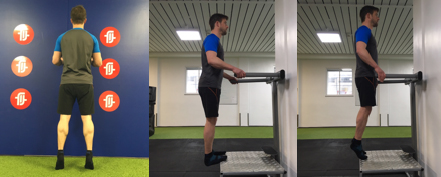
Bent Knee Calf Raises – Soleus
- Standing against a wall, hands supporting yourself on the wall, with your hips sat back (similar to a squat) and a bend in the knees
- Raise your heels off the floor coming up onto tiptoes
- Knees moves forwards towards
- Try to evenly distribute your weight through all 5 toes on each foot, try not to favour your big toe or little toe
- At the top of range hold for a moment
- Slowly and with control, lower your heels back to the floor
- These can also be performed sitting down on bench with your foot raised on a bumper plate or step and adding weight on top of the knees.
- 3 sets of 15-20 reps
To progress add weight using dumbbells or a weighted vest for straight leg calf raises.
To increase the eccentric work, go up on two legs, down on one.
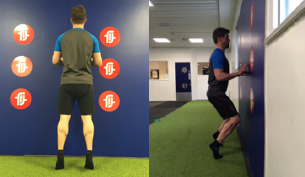
Step Ups
Running is a unilateral exercise therefore single leg strength is important for runners. Considering the unilateral, running like movement of a step up, it effectively challenges recruitment patterns similar to those encountered during running. The step up demands single leg postural stability and coordination as well as dynamic control of the pelvis and trunk whilst cycling the ankle, knee and hip and arms through a running-like motion.
Knee Extensors, hip abductors and external rotators
- Use a step/box that’s 7/8 inches to … high
- Place your entire foot onto the step/box, pressing your weight through your heel as you shift your weight forward onto the front leg to step onto the step/box driving up with the front leg
- Stay tall throughout this movement – try not to lean back
- As you step onto the box to straighten your leg, the other leg with drive through till the knee is level with the hip and at 90 degrees.
- Raise the opposite arm and leg – like running
- Reverse the movement by stepping back down slowly and controlled on the same leg you stepped up with
- Ensure knees stay in line with your toes
- Avoid using momentum from the back leg to help you onto the box (if you are struggling to do this, you can go from a toe-off position on the back leg)
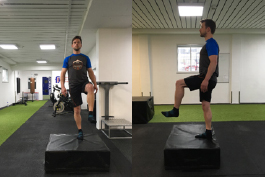
Front Plank
Efficient running mechanics can be *attributed* to an integrated stabilizing system, a strong core, you’re able to maintain a stable pelvis while your legs are powerfully propelling you forward, and your arms are pumping like pistons. We need exercises that improve the function of the core to prevent excessive torso rotation, transfer force and stabilise the spine. Lack of core strength can create long term motor skill problems as the body continually adapts to find the path of least resistance and turns away from proper running mechanics which can waste energy from the body trying to control excessive movement and therefore lead to injury and poor performance. The front plank is a bracing exercise which entails simultaneously co-activating all of the muscles that surround the spine
- Start on all fours
- Lower onto your forearms with shoulders directly over your elbows
- Step your feet back into a plank position
- Pull your shoulder blades down and back – not rounded or raised towards your ears
- Engage your abdominal muscles and glutes tight to keep your hips inline with your shoulders
- To brace, imagine you’re going to be punched in the stomach and you’re tightening all of the muscles around the spine front, back and sides
- Ensure you don’t hold your breath
- Maintain your lower back’s natural curve (Neutral spine) – if you find your lower back is arching too much, contact your glutes and posteriorly tilt your pelvis (imagine you have a belt buckle and you are trying to bring it closer to your belly button)
Hold this position for 30 seconds for 3 sets.
Increase by 5-10 seconds when it begins to feel easy
